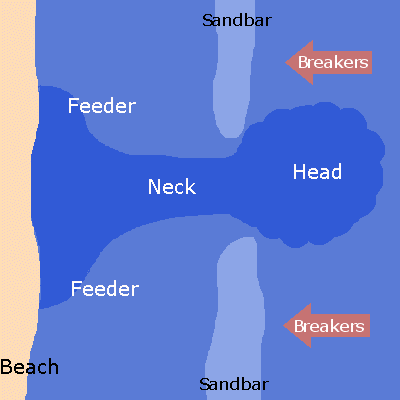Rip current illustration
|
There are three main components to a rip current, which include the FEEDER(S), the NECK and the HEAD. As waves approach, they will break along the sandbars (shaded light blue) then finally impact the beach (shaded brown). After contacting the beach zone the water becomes trapped by the sandbars, thus finds the path of least resistance, accelerated by gravity back to the ocean. This path is usually a break between two sandbars, as shown in the diagram. The current becomes focused between the sandbars, thus increases in speed seaward. Eventually the seaward component of the rip will lose speed and disperse in the head area. Source: Wikimedia Commons, US National Oceanic and Atmospheric Administration. Public domain image. |

